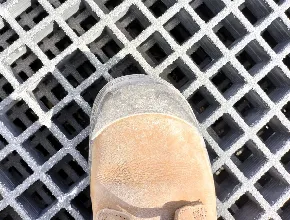loading...
- No. 9, Xingyuan South Street, Dongwaihuan Road, Zaoqiang County, Hengshui, Hebei, China
- admin@zjcomposites.com
- +86 15097380338
- Welcome to visit our website!
High-Quality RO Membrane Housing for Reverse Osmosis Systems
Understanding RO Membrane Housing The Key to Efficient Water Purification
Reverse osmosis (RO) technology has revolutionized the way we purify water, making it essential for both residential and industrial applications. At the heart of this technology lies the RO membrane housing, a crucial component that ensures the effectiveness and longevity of the reverse osmosis system.
What is RO Membrane Housing?
RO membrane housing is a protective enclosure that holds the reverse osmosis membrane. The membrane itself is a thin, semi-permeable layer designed to allow water molecules to pass through while blocking contaminants, impurities, and larger molecules. The housing is typically made from durable materials like polypropylene or stainless steel, providing resistance to corrosion and ensuring that the system can withstand high pressures.
The Importance of RO Membrane Housing
The primary function of RO membrane housing is to provide a robust and secure environment for the membrane. Proper housing is vital for a few reasons
1. Protection The membrane is delicate and can be easily damaged. The housing safeguards it from physical impacts and potential contaminants that could affect its performance.
2. Fluid Dynamics The design of the housing influences how water flows through the membrane. Efficient housing ensures optimal water contact with the membrane's surface, enhancing the purification process.
3. Pressure Regulation RO systems often operate under high pressure to push water through the membrane. The housing must be able to withstand these pressures without leaking or deforming.
4. Ease of Maintenance A well-designed housing allows for easy replacement of the membrane. This is crucial since RO membranes have a finite lifespan and require periodic replacement to maintain water quality.
Types of RO Membrane Housing
ro membrane housing

There are typically two main types of RO membrane housings standard and commercial.
- Standard Housing Used in residential reverse osmosis systems, these are generally smaller and designed for lower flow rates. They are adequate for individual households, providing clean, safe drinking water.
- Commercial Housing Larger and more robust, commercial membrane housings are intended for industrial applications. They can accommodate multiple membranes, allowing for higher water production rates and catering to the needs of businesses and large facilities.
Key Considerations When Choosing RO Membrane Housing
When selecting RO membrane housing, several factors must be considered
1. Compatibility Ensure that the housing is compatible with the specific RO membrane you intend to use, as dimensions and mount types can vary.
2. Material Choose housing made from materials that are resistant to corrosion and can withstand the operational conditions of your system.
3. Size The size of the housing should match the water demand of your application, whether residential or commercial.
4. Certifications Look for certified products that meet industry standards, ensuring quality and safety.
Conclusion
RO membrane housing plays a vital role in the efficiency and effectiveness of reverse osmosis systems. By providing protection, optimizing water flow, and facilitating maintenance, it ensures the reliability and longevity of water purification processes. When selecting RO membrane housing, consider factors such as compatibility, material, size, and certifications to ensure you choose the best option for your purification needs. As technology advances and the demand for clean water increases, the importance of quality RO membrane housing will only continue to grow.
-
The Rise of FRP Profiles: Strong, Lightweight, and Built to LastNewsJul.14,2025
-
SMC Panel Tanks: A Modern Water Storage Solution for All EnvironmentsNewsJul.14,2025
-
GRP Grating: A Modern Solution for Safe and Durable Access SystemsNewsJul.14,2025
-
Galvanized Steel Water Tanks: Durable, Reliable, and Ready for UseNewsJul.14,2025
-
FRP Mini Mesh Grating: The Safer, Smarter Flooring SolutionNewsJul.14,2025
-
Exploring FRP Vessels: Durable Solutions for Modern Fluid HandlingNewsJul.14,2025
-
GRP Structures: The Future of Lightweight, High-Performance EngineeringNewsJun.20,2025
